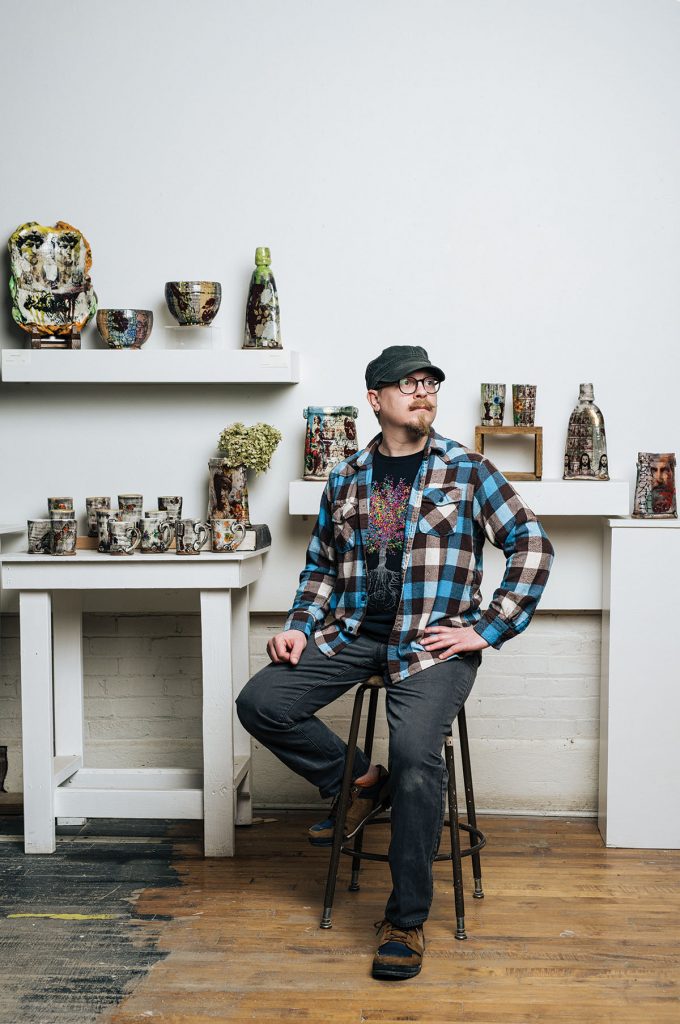
Portrait by William Crooks
Brock Flamion first explored the dichotomy between aestheticism and functionality while pursuing his Bachelor’s degree in Studio Art at the University of Southern Indiana. “A professor argued high art and craft were one and the same,” he says. Flamion quickly subscribed to that thinking.
Now working out of Odyssey Studios in the River Arts District, the ceramicist is a poster child for beautiful pragmatism. His latest series, “Graffiti Wares,” toys with the pedestrianism of street art. Vases, mugs, plates, and wall tiles are adorned with imagery that combines back-alley kitsch — Benjamin Franklin’s stern visage on collaged $100 bills, Sailor Jerry roses — with features of classical-art statues, everything doused, visibly dripping: one scene melting to the next. There are also allusions to the ephemeral, tongue-in-cheek nose art found on World War II planes.
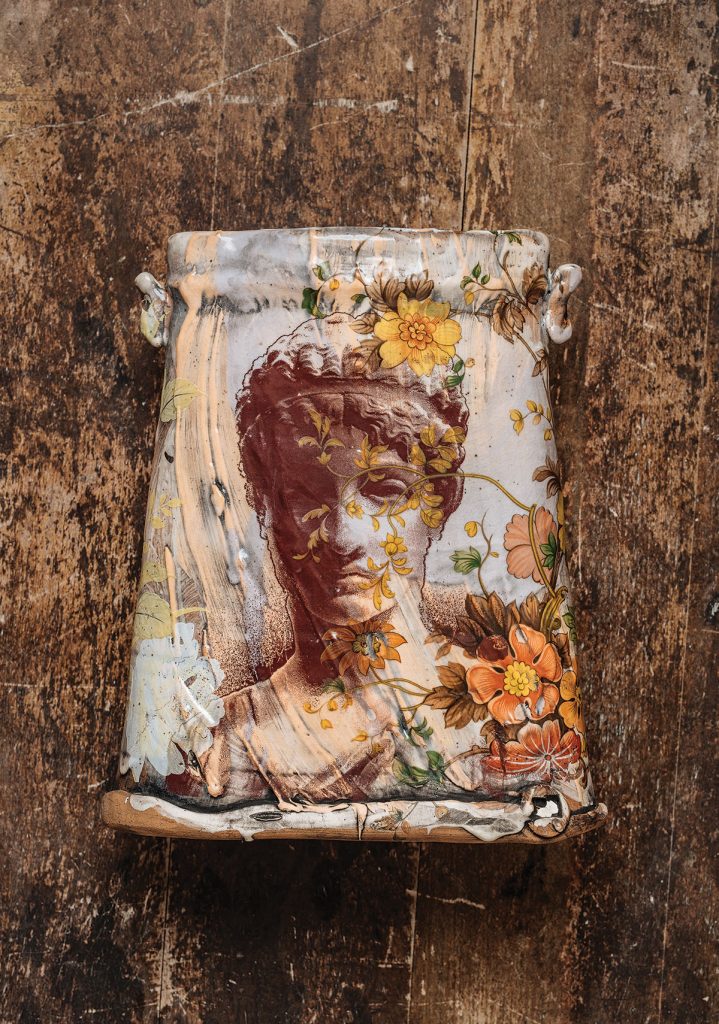
Photo by William Crooks
Flamion draws a parallel between graffiti and functional pottery, noting that both have been disregarded as lowbrow forms of their respective mediums (paint and clay). He made the connection when he and wife Lisa, a fellow ceramicist, moved to Asheville in 2011 in search of a “culturally motivated” arts scene. They both took a “monumental plunge” by opening 2 Hearted Studio and renting a second-floor space in Riverview Station. It was there, years before Lyman Street’s boom, that Flamion observed the daily evolution of street art firsthand. “It was a different style, very over the top,” he says.

Photo by William Crooks
Flamion’s vessels are loosely thrown, in part because of his time studying under Japanese ceramic artists at Penland School of Craft. But more than that, his imagery is fluid and, unlike a lot of graffiti, political noncommittal.
“I don’t want to imply anything,” says Flamion. “If I put a grenade next to a rose, it’s about balancing the images. It’s up to the viewer to see something.”
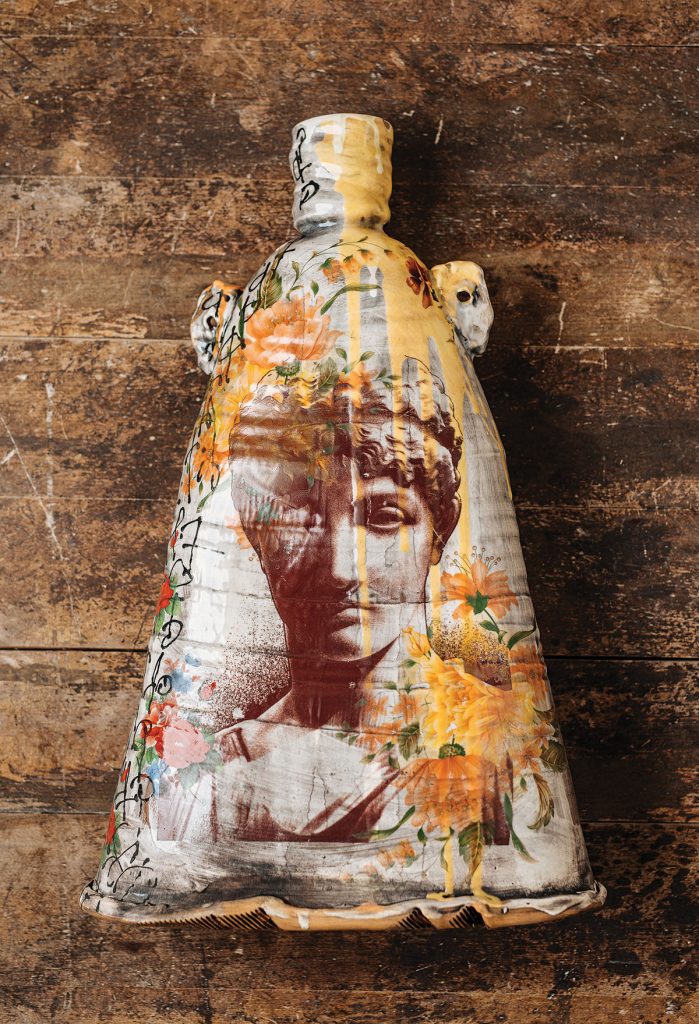
That’s not to say Flamion’s work is straightforward. Actually, his motifs are fairly meta. “I always reference the human experience and artistic interpretations of that experience,” he explains. “Sacred Vessels,” an older series, culls inspiration from the enigmatic still-life paintings of the Dutch Golden Age: rich but muted colors, rotting fruit, and lots of human skulls — a traditional drinking vessel for centuries.
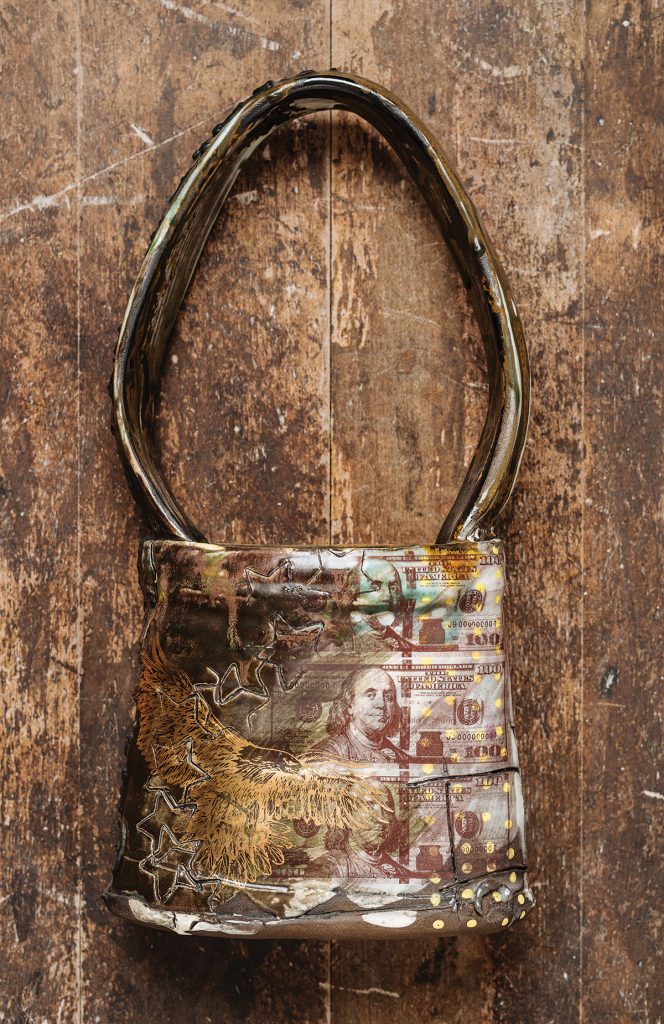
“I explored the concept of sacredness in a religious sense. But anything can be sacred. All images carry meaning,” he says.
A full-time employee at Highwater Clays, Flamion is involved in all steps of the making process. After throwing on the wheel — a process he likens to dancing — he layers each piece with sepia images, gold luster, or glaze, and fires them four to five times. By the end, he feels a certain closeness with the product and its potential consumer.
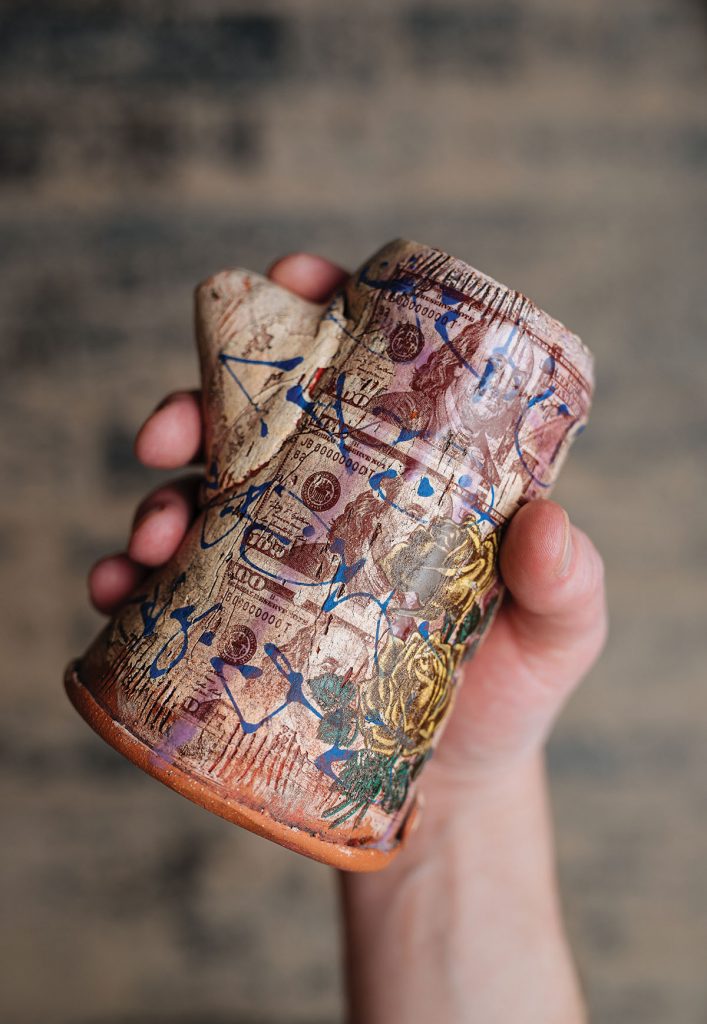
“I like producing useable wares because of the intimacy,” he says. “A cup, for instance, has been made by someone’s hands and will be placed against someone’s lips. It’s incredibly intimate.”
Brock Flamion, Asheville. Flamion is represented by Odyssey Co-op Gallery (238 Clingman Ave., Asheville, odysseycoopgallery.com) and also sells work at Kress Emporium (19 Patton Ave., Asheville, thekressemporium.com); BAD Craft (128 Cherry St., Black Mountain, badcraft828.com); and Dobra Tea (78 North Lexington Ave., 707 Haywood Road, Asheville, dobrateanc.com). For more information, see 2heartedstudio.com and @brockflamionceramics on Instagram.